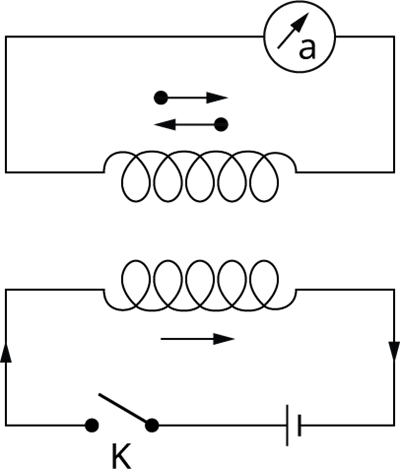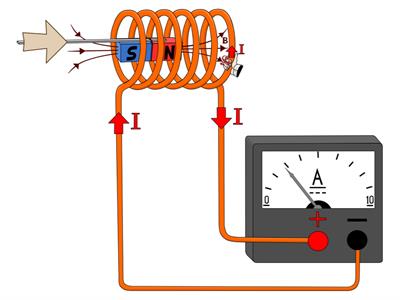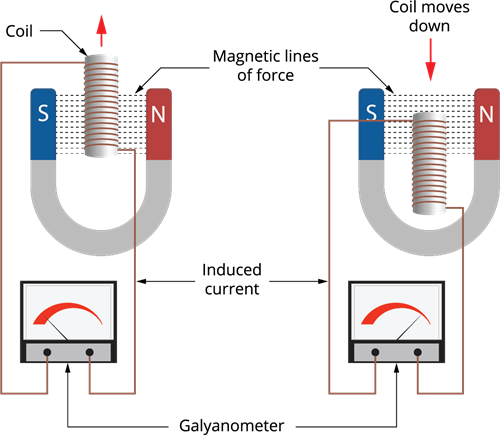
PUMPA - SMART LEARNING
எங்கள் ஆசிரியர்களுடன் 1-ஆன்-1 ஆலோசனை நேரத்தைப் பெறுங்கள். டாப்பர் ஆவதற்கு நாங்கள் பயிற்சி அளிப்போம்
Book Free DemoWhen Oersted demonstrated that a magnetic field is produced around a current-carrying conductor, the opposite effect was attempted. When the magnetic flux linked to the conductor is changed, Michael Faraday demonstrated the possibility of producing an e.m.f across the conductor in \(1831\). Faraday conducted a few experiments to prove his point.
Faraday's experiment:
Experiment-\(1\):
Two coils were wound on a soft iron ring in this experiment (separated from each other). A battery and a switch \(K\) are connected to the coil on the left. On the right, a galvanometer is attached to the coil. There is an instantaneous deflection in the galvanometer when the switch is turned on. Likewise, when the switch is put 'off', again, there is a deflection – but in the opposite direction. This proves the generation of current.

Electromagnetic induction in a current-carrying coil
Experiment-\(2\):
The movement of the magnet in and out of the coil generates current (or voltage) in this experiment. The voltage generated increases as the number of turns increases.

Electromagnetic induction by moving the magnet Experiment-\(3\):

The magnet remains stationary in this experiment, but the coil is moved in and out of the magnetic field. Current is induced here as well.

Electromagnetic induction by moving coil
All of these observations led Faraday to the conclusion that whenever the magnetic flux in a closed circuit changes, an emf is produced, and the amount of emf induced varies directly with the flux change rate. This emf is referred to as induced emf, and the phenomenon of producing an induced emf due to a change in magnetic flux in a closed circuit is referred to as electromagnetic induction.
Important!
The induced current's direction was determined by Lenz's law, which states that the induced current in the coil flows in the opposite direction of the change that causes it. Another rule known as Fleming's Right-Hand Rule can be used to determine the direction of induced current.